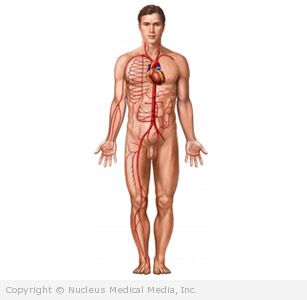Arterial blood gases
Arterial blood gases – Definition
This is a blood test to identify levels of certain gases in the blood.
Arterial blood gases – Reasons for Test
This test determines the amount of oxygen and carbon dioxide dissolved in the blood, as well as the acid/base status. Oxygen and carbon dioxide levels are indicators of lung function. The acid/base status provides information on how well the lungs and kidneys are functioning. It can also give information as to whether there is a problem in the body, like an infection, that is throwing off the acid/base balance in the body.
If you are undergoing oxygen therapy, this test can help to see if the therapy is effective.
Arterial blood gases – Possible Complications
Complications are rare, but no procedure is completely free of risk. If you are planning to have an arterial blood gases test, your doctor will review a list of possible complications, which may include:
- Bleeding
- Bruising
- Injury to the artery
Be sure to discuss these risks with your doctor before the test.
Arterial blood gases – What to Expect
Prior to Test
If the blood is going to be taken from an artery in the arm, an Allen test will be done. This test will be used to evaluate blood circulation. During the Allen test, the technician will press the radial and ulnar arteries in the wrist. This will cause your palm to turn white. When the arteries are released, the skin will turn pink and flushed. If your skin does not flush within five seconds, this will indicate that you have decreased blood flow to your palm. Another puncture site will need to be chosen.
Arterial blood gases – Description of Test
The puncture site will be swabbed clean. The needle will then be inserted into the selected artery. Blood will be withdrawn. The needle will be removed.
Arterial blood gases – After Test
The technician will put pressure on the puncture site for about five minutes. If you take a blood-thinning medicine, it may take longer for the bleeding to stop. Once the bleeding has stopped, a bandage will be placed on the site. You will leave the bandage in place for 30-60 minutes. You will need to keep the site clean.
Arterial blood gases – How Long Will It Take?
A few minutes
Arterial blood gases – Will It Hurt?
It may hurt slightly when the needle is inserted.
Arterial blood gases – Results
Based on the test results, your doctor can assess your lung and kidney function.
Arterial blood gases – Call Your Doctor
After the test, call your doctor if any of the following occurs:
- Signs of infection, including fever and chills
- Bleeding or severe bruising
- Weakness, tingling, or numbness of an extremity
In case of an emergency, call for medical help right away.

